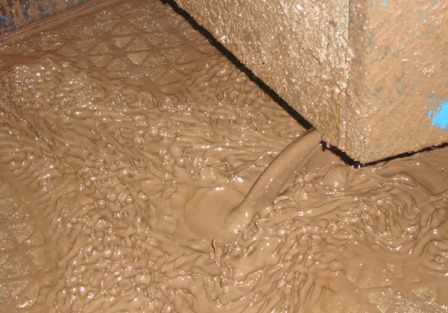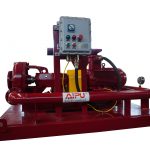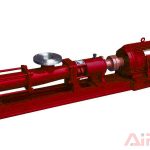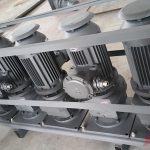As the inclination of the wellbore increases, so does the tendency for the drill cuttings to drop onto the Low Side of the hole. Continued buildup of cuttings will increase the risk of getting stuck pipe. Since the drill collars will also tend to sag against the Low Side of the hole. A buildup of cuttings will also cause problems when running logging tools or liners. The precautions took to avoid stuck pipe in conventional wells apply also to horizontal wells. In addition to these, however, some other techniques may be used.

Eccentric tool joints. As the drill string rotates, the eccentric tool joints will stir up any cuttings that have been deposited, bringing them to the main flow stream.
Reverse circulation subs. These can be made up as part of the bottom hole assembly to divert flow from the drill string into the annulus to move cuttings of the side of the borehole.
Top drive systems. The pipe often becomes stuck when tripping out of the hole in unstable formations. This may also be due to cuttings from settling out after circulation is stopped. When stuck pipe is detected, circulation and rotation of the string should begin as quickly as possible. A top drive system is in a position to doing this much faster than making up the kelly and turning the rotary table. The power swivel can be quickly stabbed into the uppermost joint of the drill pipe during a trip to allow rotation and circulation as the pipe is being pulled out of the hole. This process is known as “back-reaming” and it has been used successfully in numerous high-angle wells when tripping out of the hole.
Mud properties and solids control equipment. The properties of the drilling fluid must be carefully selected to achieve good hole cleaning. The most critical parameter is the yield point of the mud, which may have to be increased considerably in a highly deviated well. (A yield point/plastic viscosity ratio greater than 1.0 is commonly used.) Yield points of up to 30 Ib/100 ft2 have been reported. Turbulent flow in the annulus may be used to lift the cuttings from the Low Side of the hole.
It is essential that the cuttings lifted out of the annulus are effectively removed from the surface before re-cycling. The solids content of the mud must be very closely monitored. Efficient use of solids control equipment such as shale shakers, hydrocyclones and mud cleaners is essential.







